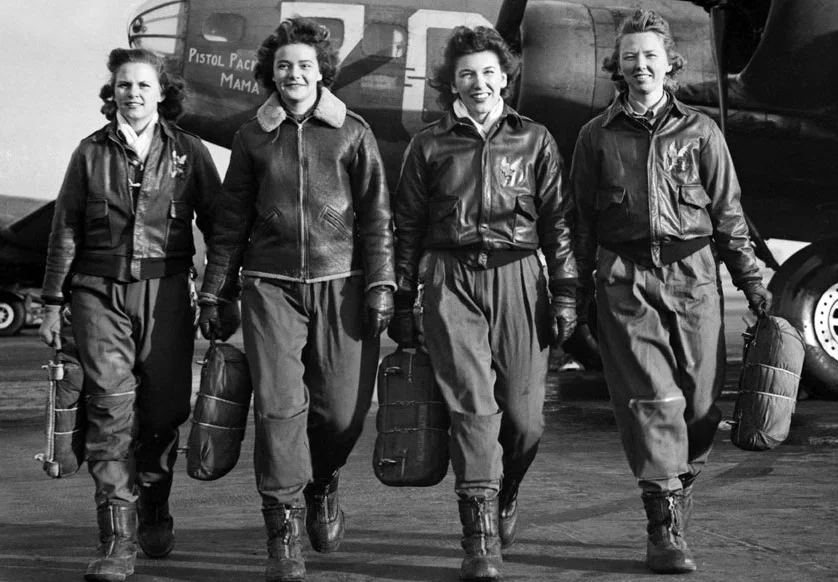
Less than a year into World War II, Army Air Forces General Henry H. Arnold requested the approval of two programs: the Women Auxiliary Ferrying Squadron and the Women’s Flying Training Detachment, or WAFS and WFTD respectively. The purpose of these two programs was to free male pilots from domestic operations so they could focus on in-combat missions. Then, in 1943, the WFTD and WAFS programs merged into WASP, or the Women Airforce Service Pilots organization.
The initial setup phase for the WASPs required recruiting female pilots in an otherwise male-dominated field. In order to even apply to the WASPs, women had to have a private pilot’s license along with 200 hours of previous flying experience. This did not prove as effective as previously thought, however, so officials soon changed the requirements for application, accepting anyone, including those without prior experience. After being accepted, the women went through months of military flight training to prepare them for active duty.
Approximately 1,100 of the original 25,000 applicants would end up making it through to work in as WASPs. Despite no training in combat, WASPs flew a total of 60 million miles in operational flights, smoke laying, by towing aerial targets, transporting cargo, and many other types of missions. The WASPs would ferry 50% of combat aircrafts during the war years. By the end of 1944, the WASPs had flown every type of aircraft manufactured for WWII.
The WASPs proved time and time again that they were just as ready and willing to protect their country as their male counterparts. Between 1943 and 1944, 38 of the WASPs would give their life for this country. However, due to their civilian status, these women did not receive military benefits or burials.
Due to the success of the program, General Arnold tried to get the WASP organization to be a full part of the military. Despite his efforts, the WASP program was disbanded on December 20, 1944. During the final graduation ceremony, General Arnold told the women graduating, “We of the AAF are proud of you; we will not forget our debt to you.” Soon after the war ended, however, the WASP program was classified, and its existence withheld from the public. Women would not fly in the military again for 30 years, until 1974, when the Army and Navy began accepting their own female pilots. The Air Force would follow suit in 1976.
When the Air Force announced they would be accepting women into their ranks, the women were incorrectly identified as being the first women to fly for the military. After some WASPs protested this, however, President Jimmy Carter released the documents detailing the contributions of the WASP program to the public in 1977. He would also sign a law that gave WASPs benefits, as well as an official veteran status.
Mt. Soledad National Veterans Memorial believes that telling the stories of those who serve and protect our country is key to preserving their legacy and the history of our nation. Our memorial has thousands of plaques commemorating service members from all branches who fought for our freedom, including women who served in the WASP program. Come see the gorgeous walls for yourself and learn about the stories of the people who protected your freedom.